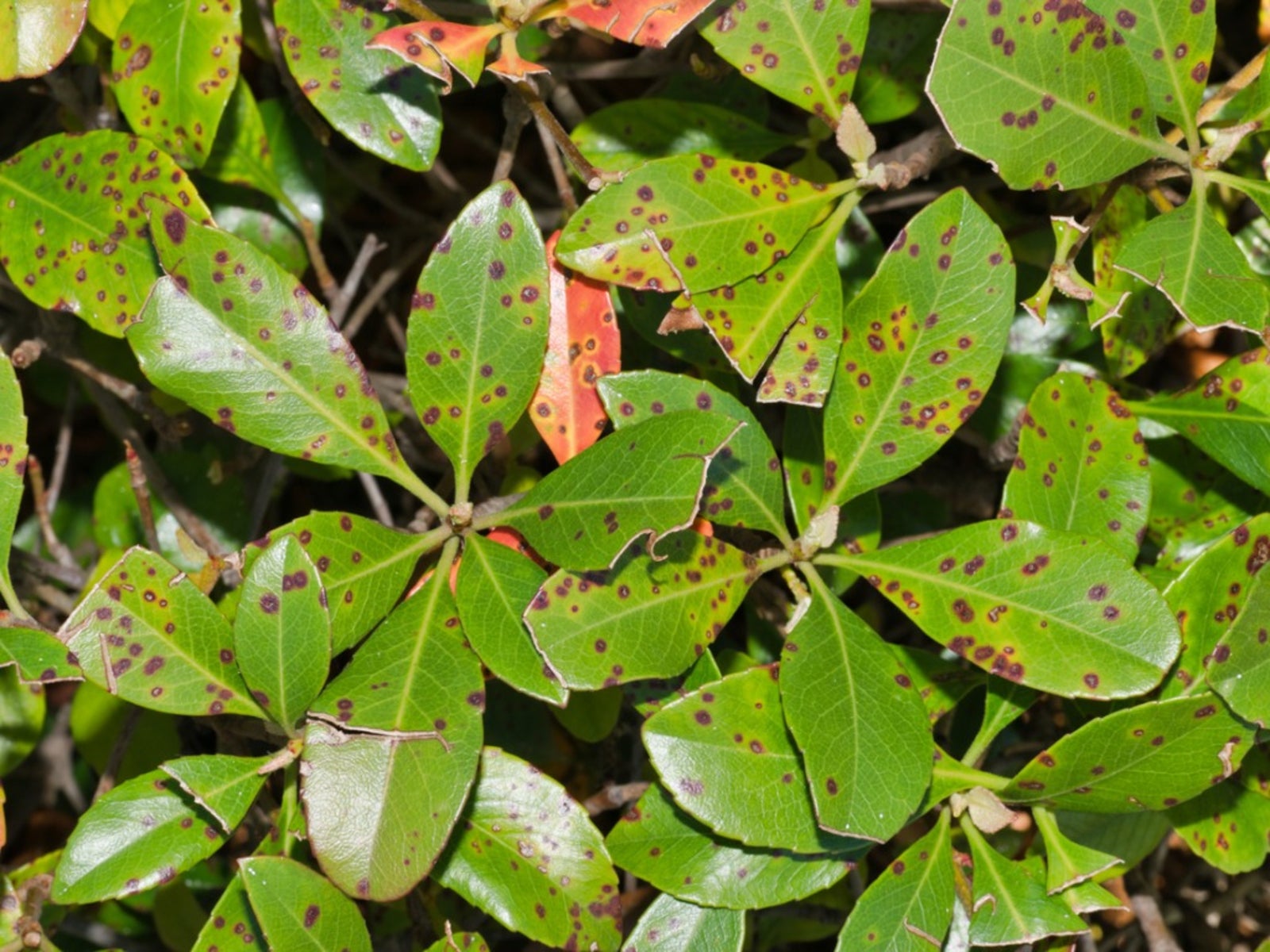Bacterial Leaf Spot On Plants: How To Treat Bacterial Leaf Spot


Many ornamental and edible plants display dark, necrotic looking spots on their leaves. This is a symptom of bacterial leaf spot disease. Bacterial leaf spot on plants will discolor, and in extreme cases, kill leaves. Tiny, microscopic, single celled organisms are what causes bacterial leaf spot. There are several methods on how to treat bacterial leaf spot and save your plant's glorious leaves. Early identification is crucial to effective management of bacterial leaf spot disease.
Symptoms of Bacterial Leaf Spot
Bacterial leaf spot on plants may manifest in several different ways. Symptoms of bacterial leaf spot may include black edged lesions, brown spots with yellow halos, or just light and dark areas on the foliage. Spots are irregular and measure between 3/16 and ½ inch (5 mm. to 1 cm.) wide. They can occur on the top or bottom of a leaf and kill sections of the tissue when they cluster together. Symptoms of bacterial leaf spot may also appear on the edges of a leaf, where it appears brownish yellow and the tissue dries and breaks off. The leaves become quite papery and delicate when the bacterial disease attacks the leaf edges. The disease is most prevalent on older leaves, but will quickly establish on newer tissue.
What Causes Bacterial Leaf Spot?
Organisms that cannot be seen with the naked eye are the cause of this visibly damaging plant disease. Wet, cool conditions promote the formation of these bacteria, which can spread on plants quickly. The bacteria splash onto leaves or overwinter on plant debris in soil. Bacteria divide to reproduce and one bacterium can multiply quickly in just a matter of hours. Bacteria reproduce the fastest when temperatures are 77 to 86 degrees F. (25-30 C.). High rates of infection will cause leaf loss and can seriously compromise a plant's health. This makes the disease extremely contagious and bacterial leaf spot disease treatment extremely important. The pathogen is carried in infected seed as well, although, there are some disease resistant seed strains for food crops. Additionally, choose disease free transplants, rotate crops, and avoid overhead watering to prevent spreading the bacteria.
How to Treat Bacterial Leaf Spot
In addition to the previous tips on preventing the spread of the disease, you can use a copper fungicide on crops. This has limited management use unless it is applied early in the disease cycle. On ornamental plants, remove the affected leaves at the first sign to prevent the bacteria from jumping onto adjacent leaves. Some of the most common hosts are lettuce, beets, eggplant, peppers, and large leaved ornamental plants, such as philodendrons. Remove old vegetable debris in the garden and do not plant new crops where host plants were once growing. There are no recognized chemical treatments for bacterial leaf spot disease. Your best bet is prevention and mechanical control at the first sign of symptoms of bacterial leaf spot.
Gardening tips, videos, info and more delivered right to your inbox!
Sign up for the Gardening Know How newsletter today and receive a free copy of our e-book "How to Grow Delicious Tomatoes".

Bonnie Grant is a professional landscaper with a Certification in Urban Gardening. She has been gardening and writing for 15 years. A former professional chef, she has a passion for edible landscaping.
-
 Try The Trend – Turn Any Bed Into A Keyhole Garden With This Clever In-Ground Composter
Try The Trend – Turn Any Bed Into A Keyhole Garden With This Clever In-Ground ComposterKeyhole gardening is an efficient and sustainable practice that saves space. Get started on this DIY project quickly and easily with an in-ground composter.
By Bonnie L. Grant
-
 4 Superfast Composting Methods: Turn Waste Into Garden Gold In 30 Days Or Less
4 Superfast Composting Methods: Turn Waste Into Garden Gold In 30 Days Or LessTry the fastest composting methods to turbocharge your pile and transform kitchen scraps and garden waste into finished compost in just a few weeks.
By Mary Ellen Ellis